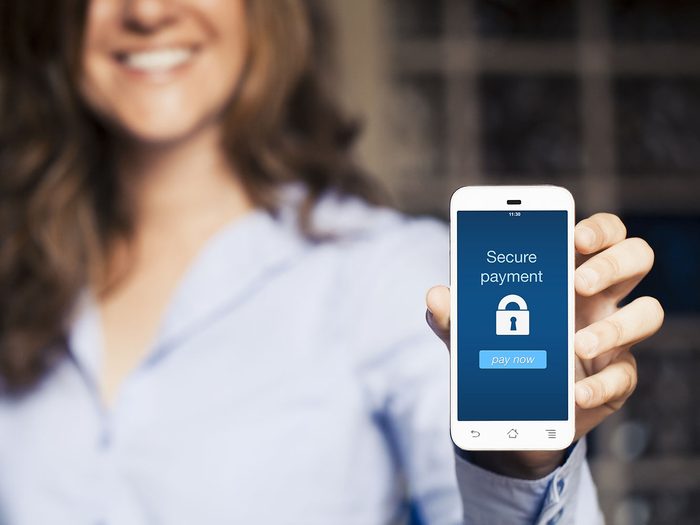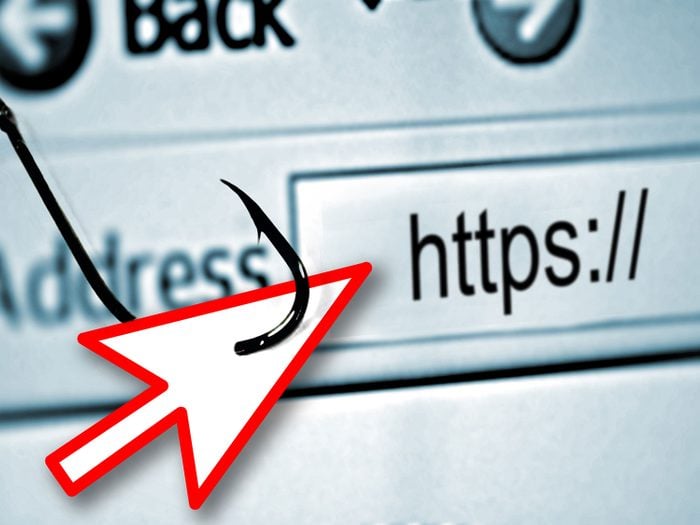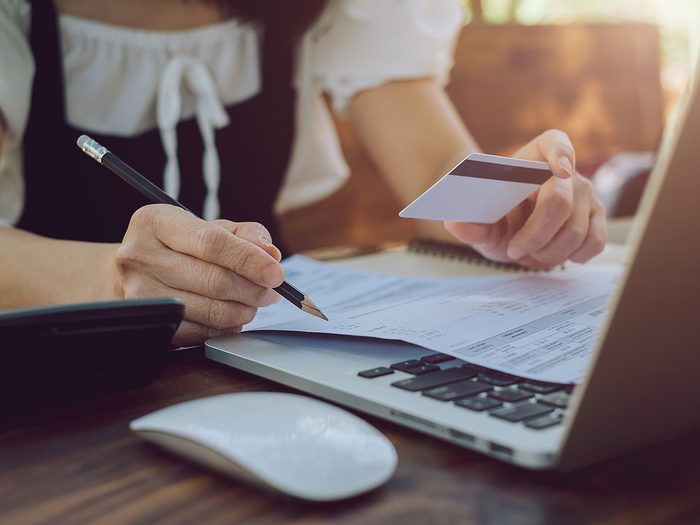
Only trust encrypted websites
Not all e-commerce sites provide the ideal conditions for safe online shopping. It’s important to limit your shopping to encrypted websites, and only conduct transactions when you’re on a trusted WiFi network. “Look for a padlock symbol on the URL bar, as well as next to your WiFi network’s name,” advises Satish Kanwar, product director at Shopify.ca. “Following these steps is the best way to ensure that your personal information is being transferred in the safest way possible.”
Find out 14 things you should never do when using public Wi-Fi.

Protect your personal information
It’s normal for online retailers to request additional details and preferences to make your online shopping experience more personalized. However, if they ask for too much information—like your social insurance number, for instance—that’s a definite red flag.
Here are 10 online scams to be aware of—and how to avoid them.

Create unique passwords for each website
Avoid using the same password for every online shopping site you frequent. “That way, if your login information gets stolen on one website, your other accounts likely won’t get compromised,” says Kanwar.
These are the password mistakes that hackers hope you’ll make.

Look for the ‘S’
Any time you input personal or credit card information into a website, ensure the page is secured. Kanwar says that the quickest way to check for this is in the URL. “The website URL should start with https:// (rather than http://) and should have a padlock symbol to indicate that the page is secure.”
Find out how to prevent identity theft in five simple steps.

Be wary of dream deals
Kanwar warns consumers to regard sale-of-the-century price tags with a healthy dose of skepticism. “When items are priced significantly lower than they should be, that should raise a flag about the legitimacy and authenticity of the website,” he says. “Low prices are enticing, but if it’s too good to be true, it usually is.”
These mindful shopping tips can help curb your spending.

Look for customer service information
Safe online shopping sites have their toll-free customer service line or email address readily available. Kanwar also recommends reading over the website’s refunds and exchanges policies: openness about these conditions is often a good indicator of credibility.
Ever had an online shopping delivery stolen? Find out how to stop porch pirates in their tracks.

Don’t click on untrusted pop-up ads
While it’s common practice for retailers to use pop-up ads for e-newsletters, promotions and flyers, Kanwar warns consumers to keep an eye out for phishing scams. “Pesky pop-ups are a way for scammers to lure or confuse online shoppers,” he says. “Make sure to have an ad-blocker installed when shopping on unfamiliar websites to avoid getting phished.”
Here are three times you shouldn’t accept cookies on a site.

Check your credit card statement
Keep a close tab on your credit card statements, even after you’ve received your purchased item. “It’s always smart to ensure that there were no hidden charges tacked on, or unfamiliar names deducting from your account,” Kanwar suggests.
Now that you’re familiar with these safe online shopping tips, find out why you need to stop commenting on viral Facebook memes.